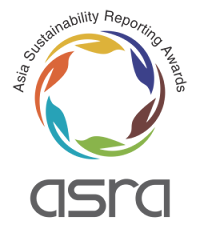This week, I came across an interesting and very detailed account of a materiality process. It's the Mountain Equipment Co-Op's (MEC) 2013 Materiality Matrix. MEC is a Canadian outdoor gear cooperative with 16 retail stores across Canada, over 1,700 employees and $300 million in sales, of which 1% is donated back into the community. MEC produces an annual Accountability Report, and the 2012 report is a self-declared GRI Application Level B. The report is all online, and several supporting materials are provided as PDF downloads, including:
- a summary report, which is a one-pager with topline quantitative data
- a DMA overview, which is a short summary of the management policies in the six categories of the GRI guidelines : EC, EN, LA, SO, HR, PR
- a stakeholder panel report, which is a summary of the specific feedback received from a Stakeholder Panel, together with MEC's responses
For the first time, MEC also publicly shares the detailed approach and process of developing a Materiality Matrix. The MEC process follows four steps:
- Identifying and mapping stakeholders
- Developing a list of possible sustainability topics
- Rank and prioritize the issues
- Review and revise with input from senior management
This is a standard approach, and not too dissimilar from the process recommended in GRI's G4 Implementation Manual:
 |
| G4 Implementation Manual page 32 |
 |
| MEC 2012 Material Topics |
 |
| MEC 2012 Material Issues |
In an interactive presentation, each material issue is defined, and each topic is shown with the material issues that are relevant to that topic. The online Accountability Report links these material issues to the report narrative and data. Each issue is reported in full, with goals, progress and performance indicators.
I find this to be a thorough and transparent approach to materiality which provides stakeholders with a clear picture of what's important in the MEC world of sustainability and its impact on them. In fact, this is probably the sort of stuff that G4 reports are made of.
And as we mentioned G4, if you haven't managed to wade through 300 pages of technical guidance yet, you might be interested to know that Understanding G4 is now available for purchase and use.
Designed to meet the needs of Chief Sustainability Officers, SME Owners/Managers, CEOs, Sustainability Consultants, Sustainability Report Writers, Sustainability Report Assurers, Academics and Students, Investors, Shareholders, Suppliers, and all Stakeholders who are interested to know how to use G4, and what they should look for in a G4 report, this book is an indispensable support tool. As I am already involved in the preparation of at two G4 reports for our clients at Beyond Business Ltd, I am already using Understanding G4 myself :).
If you would like to hear more about the book content, join me in a FREEBIE webinar on Tue, Jul 30, 2013 5:00 PM - 6:00 PM BST - register here. I'll be talking about what's in the book and why G4 is a transformational tool for sustainability reporting.
Understanding G4 contains some valuable tables which are immensely useful for finding your way around G4:
- G4 required reporting elements
- Comparison of G3 and G4 General Disclosures
- Material Aspects covered by G4
- Changes in the number of performance indicators
- Specific Standard Disclosure Tables
- The G4 SWOT
- The G4 Decision Matrix
- Principles for Defining Report Content
- Principles for Defining Report Quality
Here's a screenshot from the table comparing G3 and G4 disclosures at different levels, an important step in the G4 transition planning:
You can also see more, and download a freebie chapter on our G4 Guru Facebook page, which is another place to raise questions, comments, experiences, feelings, frustrations, queries, requests etc all about G4, and the G4 Guru will respond as best she can.
In the meantime, without having completed a full G4-Ready Analysis on the MEC Accountability Report, it seems to me that one of the core building blocks is already in place.
elaine cohen, CSR consultant, winning (CRRA'12) Sustainability Reporter, HR Professional, Ice Cream Addict. Author of Sustainability Reporting for SMEs: Competitive Advantage Through Transparency AND CSR for HR: A necessary partnership for advancing responsible business practices and now : Understanding G4: AThe Concise Guide to Next Generation Sustainability Reporting. Contact me via www.twitter.com/elainecohen or via my business website www.b-yond.biz (Beyond Business Ltd, an inspired CSR consulting and Sustainability Reporting firm)
























